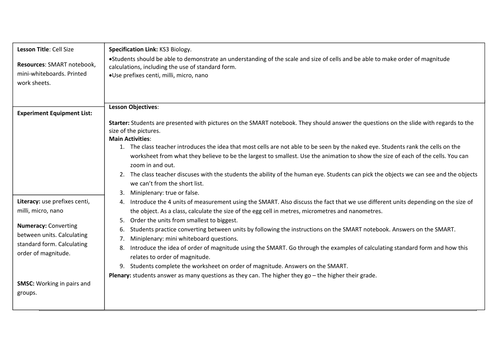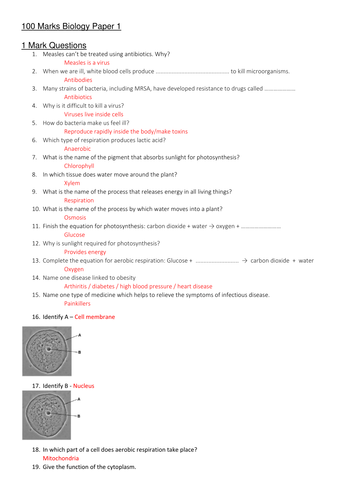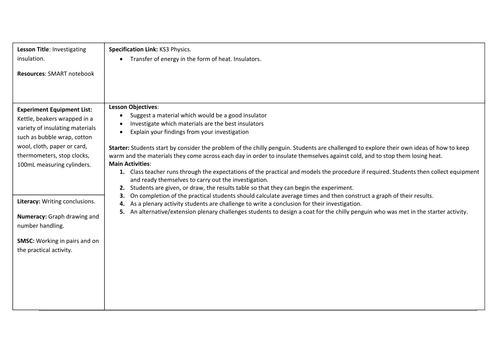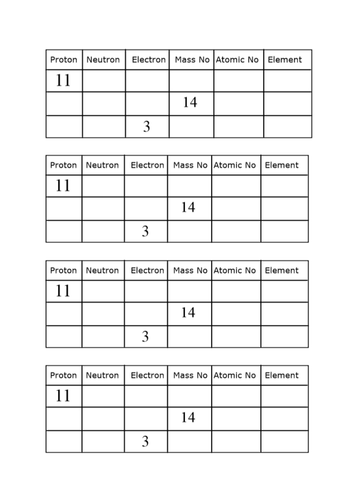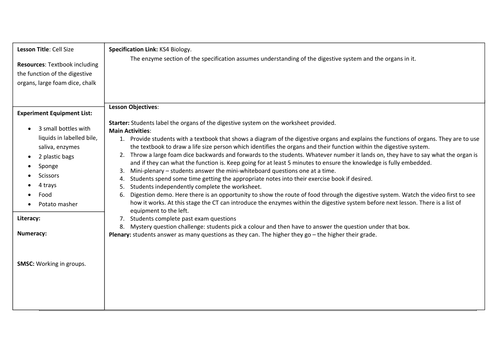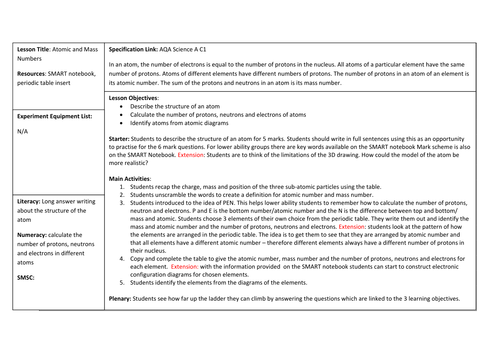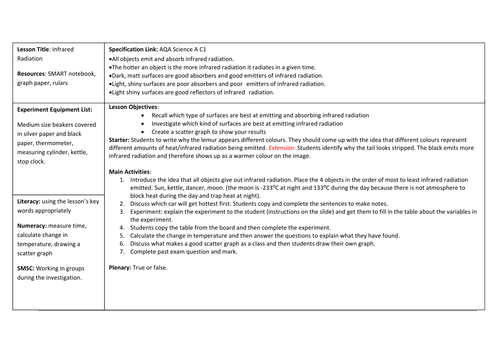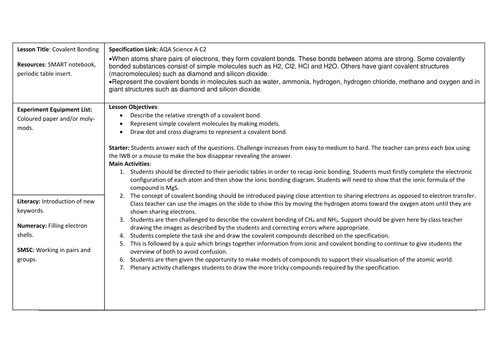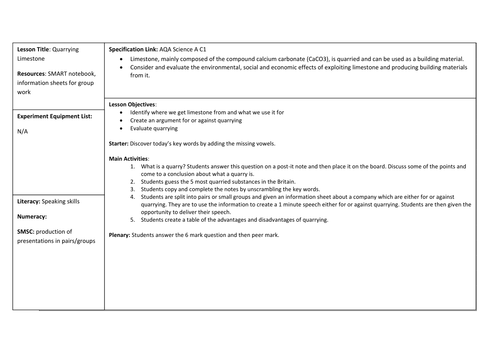
49Uploads
94k+Views
87k+Downloads
All resources

Type of Cloning
Worksheet for students to summarise three types of cloning. They can use the information sheets to produce bullet points.

Communicable and Non Communicable Diseases
KS3 Health and Disease: This task based resources looks at the difference between a communicable disease and non-communicable disease

Cell Size and Order of Magnitude
AQA GCSE Biology (separates, triology and synergy): This SMART notebook presentation, along with a lesson plan and two worksheets takes you through a few aspects of the specification.
1. The idea that we cant see cells and that different cells are significantly different sizes.
2. The units metre, millimetre, micrometre and nanometre. Students are taught how to convert between units.
3. Why we use order of magnitude and how to calculate it using standard form.

Science Triology AQA: 100 Marks Biology Paper 1
This worksheet provides 100 marks worth of exam questions for the new trilogy GCSE by AQA biology paper 1. There are a mixture of 1, 2, 3 and 4 mark questions. There is also a mark scheme attached.

P2 Revision
A double revision lesson for P2. It has multiple short activities which cover a lot of the current specification.

Ions and Ionic Bonding
AQA Science A Chemistry Resource. This task based resource goes through the definition of an ion, how to draw and decribe ions and how to draw and describe ionic bonding.

Insulation Investigation
AQA Science A Chemistry: This investigation based lesson looks at the effect different material have on heat loss from water. It also focuses on graphing results.

Electronic Configuration
AQA Science A Chemistry Resource. This task based resource goes through how to calculate the number of electrons in different atoms and how to draw the electronic configuration of different atoms.

The Digestive System
AQA Science GCSE (triology, Synergy, Separates): This SMART notebook takes the students through the digestive system to prepare them for learning about enzymes.

Electrolysis of Ionic Compounds: AQA 9-1
A lesson resourced with a video and plenary that includes:
1) Electrolysis of molten compounds
2) Oxidation and reduction
3) Exam question plenary

Food Groups
AQA Science A Biology: This task based resource works through what the 7 food groups are and what the body needs them for. It also looks at what a balanced diet is and how malnutrition can occur.

Atomic and Mass Number
AQA Science A Chemistry Resource. This task based resource goes through how to calculate the number of protons, neutrons and electrons from the mass and atomic number of elements.

Infrared Radiation
AQA Science A Chemistry: This experiment based resource investigates which kind of surfaces absorb and emit the most radiation. It is also appropriate for KS3.

The Periodic Table
AQA Science A Chemistry Resource. This task based resource goes through the periodic table with a focus on groups and periods. It also gets students familiar with the terms atom, element and compound. It finally looks at the structure of the atom.
There is a choice between a PowerPoint presentation and a Smart Notebook presentation. which have identical content.

Reactivity and Equations
AQA Science A Chemistry Resource. This task based resource goes through the reactivity of group 1 metals and how they react with water and oxygen. It also looks at describing reactions.

Covalent Bonding
AQA Additional Science Chemistry: This task based resource introduces the idea of bonding between non metals and focuses on the drawing of covalent bonding as well as the key facts about covalent bonding.

Quarrying Limestone
AQA Science A Chemistry: This task based resource introduces the idea of quarrying and limestone. It then works through the positive and negative impacts of quarrying on the environment.

AQA Trilogy: Alkali Metals/Group 1 metals
This SMART Notebook presentation works through the content for AQA trilogy Alkali metals - including the practical.

AQA Chemistry 1 Revision: Trilogy Science Learning Mat
Chemistry 1 AQA Trilogy Science Learning Mat. The mat contains a mixed collection of questions from different topics.

P1 Electricity AQA Learning Mat (GCSE)
A double sided learning mat covering the electricity section of Physics 1 for GCSE Trilogy. There are mark schemes for the long style questions.



